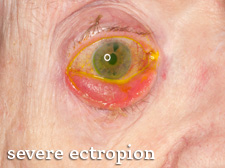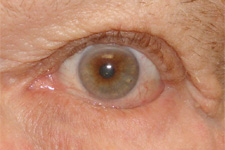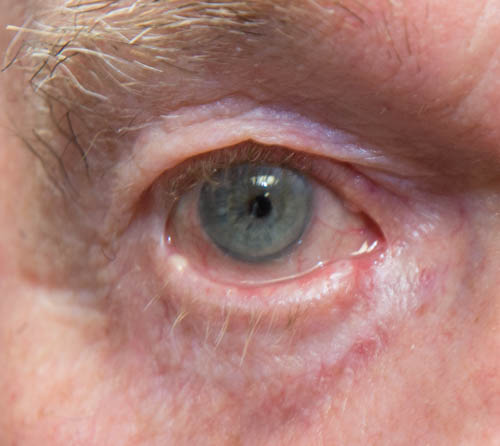Understanding Eyelid Issues: Ectropion, Entropion, and Eyelid Retraction – Causes, Symptoms, and Treatment Options

Ectropion
Ectropion means that the lower eyelid is “rolled out” away from the eye, or is sagging away from the eye. The sagging lower eyelid leaves the eye exposed and dry. If ectropion is not treated, the condition can lead to chronic tearing, eye irritation, redness, pain, a gritty feeling, crusting of the eyelid, mucous discharge, and breakdown of the cornea due to exposure.
What Causes Ectropion
Generally the condition is the result of tissue relaxation associated with aging, although it may also occur as a result of facial nerve paralysis (due to Bell’s palsy, stroke or other neurologic conditions), trauma, scarring, previous surgeries or skin cancer.
What are the Symptoms?
Normally, the upper and lower eyelids close tightly, protecting the eye from damage and preventing tear evaporation. Also, the inside surface of the eyelids is a mucous membrane and normally wet and not exposed to the air for long periods. If the eyelid rolls outward away from the eye, the inside surface dries out and becomes red and inflamed. The mucous membranes react by producing even more mucous, making the eye look infected. Also, the two eyelids cannot meet properly and tears are not spread evenly over the eye causing dry eye changes. Overall, symptoms may include excessive tearing, chronic irritation, redness, pain, a gritty feeling, crusting of the eyelid and mucous discharge.
Can Ectropion be Repaired?
Yes, ectropion can be repaired surgically. Most patients experience immediate resolution of the problem once surgery is completed with just mild bruising and swelling afterward. After your eyelid heals, your eye will feel comfortable and be protected from corneal scarring, infection, and loss of vision.

Entropion
Entropion means the the lower eyelid in “rolled in” toward the eye. This allows the eyelashes to rub on the cornea, the most sensitive part of your eye. It can cause eye irritation, pain, tearing, and could lead to a corneal abrasion and ulcer, which can permanently damage your vision.
What Causes Ectropion
Entropion is generally caused by laxity of the skin and support tissues of the lower eyelid, as well as a loss of support from the muscles within the eyelid. It may also be caused by scarring of the inside of the eyelid.
What are the Symptoms?
The eyelashes rubbing on the cornea cause tearing, pain and irritation, which is temporarily relieved by pulling down on the eyelid, rolling it back out. Usually the lid will roll back in with blinking. Occasionally, people with put tape on the lid to keep it from rolling in.
Can Entropion Be Repaired?
Yes, entropion can be repaired surgically. Immediate relief of symptoms generally follows surgery, and post-operative discomfort is minimal. After your eyelid heals, your eye will feel comfortable and be protected from corneal scarring, infection, and loss of vision.

Eyelid Retraction
Eyelid retraction means the eyelid has been pulled away from its normal position, causing more of the eyeball to be exposed. Eyelid retraction can be cicatricial (caused by scarring), senile (due to aging changes), or inflammatory (due to inflammation such as in thyroid eye disease).
What Causes Eyelid Retraction
Eyelid retraction is caused by traction on the eyelid. Lower eyelid retraction is seen in people with scarring of the skin from sun damage, lower eyelid surgery, skin cancer and other conditions that shorten the inside or outside of the eyelid. Upper eyelid retraction is most often seen in Graves eye disease (thyroid eye disease) and with any scar condition.
What are the Symptoms?
When the eyelid can’t fully cover the eye, or can’t hold the tears up at the level of the cornea, the eye may dry out and become irritated. You may develop reflexive tearing and eye redness. Vision may also begin to suffer.
Can Eyelid Retraction Be Repaired?
Yes. Lower eyelid retraction is repaired by lengthening the eyelid with skin grafts, internal spacer grafts (ear cartilage, hard palate, or animal derived synthetic grafts). It is also horizontally tightened at the outer or inner corner. The upper eyelid can be repaired by releasing internal muscles that hold it up, or in extreme cases, with skin grafts or spacer grafts.
